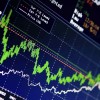
One of the obstacles that has arisen after the rate hike is that so far they have not managed to decisively control global inflation. In the absence of this evidence, investors might continue to assume that central banks will need to be more aggressive in their monetary policy. This raises the risk of affecting demand beyond expectations, increasing the possibility of a global recession.
For the United States, in particular, the debate over whether the Federal Reserve will succeed in designing a soft landing of the economy continues. This environment causes risk aversion. Thus, the valuations of most asset classes are likely to remain volatile in the short term.
Now, when it comes to opportunities, when it comes to global fixed income, investors seem positioned for strong hikes by the Fed, which in our view limits the fall of several bonds in the short term. We see specific opportunities in corporate bonds in BBB segments with terms of up to five years. In equities, we believe it makes sense to have exposure to countries with a strong rule of law, such as the United States, Switzerland, Canada, Sweden, and Singapore, as well as the information technology, healthcare, and financial sectors. Depending on the investor’s risk profile, private equity and debt markets may be a good option for improving a portfolio’s risk/return profile. And finally, we suggest small cash positions as it is subject to a certain loss of purchasing power when the corrosive effect of inflation is taken into account.
Regarding the Chilean investor, he must keep in mind that the volatility of growth and inflation in the world has increased significantly and with it the volatility of corporate profits. Depending on whether growth accelerates or slows, and whether inflation accelerates or slows at the same time, global investors will increase their turnover across asset classes, styles and sectors.
This environment makes it particularly important for the Chilean investor to take care of three things. First, optimize the construction of the investment portfolio, that is, ensure that the strategic allocation of assets to fixed income, equities, and alternative investments is aligned with the risk profile of the investor. Secondly, to seek greater diversification of the investment portfolio to protect wealth in a highly uncertain environment. And third, maintain a defensive portfolio. We suggest focusing on companies for which valuations do not reflect the stability in corporate earnings and strong growth prospects that their business models could offer. Another important factor is the strength of the balance sheet, with relatively low leverage providing protection against rising interest rates.
Follow us on
The content expressed in this opinion column is the sole responsibility of its author, and does not necessarily reflect the editorial line or position of El Mostrador.





